

EVERYONE WILL LOVE @





A CIRCUS ACROBATIC TAKE ON SWAN LAKE COMES TO WYONG IN DUCK POND
The world’s most romantic ballet Swan Lake has been re–imagined as a circus spectacular in Duck Pond by Circa, hitting The Art House on October 30.
The classic tale of swans and hapless princes takes on quirky touches like the sequinned flipper–wearing ducks, a burlesque black swan, sumptuous aerials, jaw–dropping acrobatics and of course feathers! Circa are one of Australia’s leading performing arts companies known for pushing boundaries, and blending circus with dance, theatre and movement. The Art House believed in the mash–up concept and having previously presented Circa’s superhuman acrobatics, they supported the development of Duck Pond as a co–commissioning partner. This family friendly performance will wow fans of all tastes from circus, contemporary dance, acrobatics, and classical music. Don’t miss Swan Lake like you’ve never seen it before.
“Graceful aerial solos. Jaw–dropping lifts. Superhuman balances. Swan Lake as you’ve never seen it before” – THE TIMES “Messing with Swan Lake is a risky business. You wouldn’t want to do that unless you were a bit of a genius. It so happens Yaron Lifschitz is” – IN QUEENSLAND
The Art House Presents Duck Pond by Circa | Created by Yaron Lifschitz and the Circa Ensemble Thu 30 Oct 7:30PM | Adult: $35.00 | Encore Member $28.00 | Child under 12: $20.00 | Family of 4 $90.00 thearthousewyong.com.au/whats-on/duck-pond
BEANSTALK
We’ve all heard the story of Jack & The Beanstalk, but do we really know what happened that day Jack turned up in the Giant’s castle unannounced?
Beanstalk is the hilarious retelling of the classic fairy tale told from the Giant’s point of view. Step into the Giant’s kitchen and be amazed as they cook up a very different story to the Fee–Fi–Fo–Fum we all grew up with.
Immersive and charming, Beanstalk is packed full of inventive puppetry, memorable characters, and a pinch of imagination. Designed to teach young children not to judge people solely on their appearance, it also encourages little thinkers to consider that there are two sides to every story.
The Art House has four performances within school term that are available to the public and school groups to book, and the show is suitable for Early Childhood through to Year 3.
Beanstalk will be performed in The Art House Studio, making it a more intimate and relaxed performance (perfect for younger kids’ first theatre experience).
The Art House Presents Beanstalk | Spare Parts Puppet Theatre | Tue 11 Nov 10AM & 12:30PM | Wed 12 Nov 10AM & 12:30PM (Wed sessions selling fast) thearthousewyong.com.au/whats-on/beanstalk
THE LISTIES – 110% READY
Australia’s fave children’s comedians, The Listies, are coming back to the Central Coast with their brand–new show – 110% Ready.
Featuring a poop–load of puns, silly slapstick sight gags, and a splash of improvisational idiocy, 110% Ready, sees The Listies do what every parent dreams of; having kids ready to leave the house on time! Your kids will laugh their butts off (literally).
The Art House has two performances on October 28th, a 10AM morning session available for school groups (perfect as an end of year treat or Year 6 farewell excursion) and a 6PM after school special for the public. The 6PM show is also a Pyjama Party. Kids and their adults are encouraged to wear their favourite PJs to this session and laugh until bedtime.
If you’re looking for a special night at the theatre with your oldest, or if all your kids are in that 7+ age group, this one’s for them.
The Art House Presents The Listies – 110% Ready Tue 28 Oct 10AM & 6PM thearthousewyong.com.au/whats-on/the-listies-110-ready
Welcome to another issue friends!
I have to say, there is a pep in my step lately – maybe it’s the sunny mornings or the fact that the spring school holidays are upon us – but I am waking up energised and ready to go. After an extremely busy first half of the year, I have been trying to prioritise sleep and exercise – always easier said than done. However there is much to be said for a brisk walk and an early night if you can manage it.
This month’s issue is packed with ways to support your mental and physical health – check out Staying healthy, physically, emotionally and mentally during the holiday season (page 12) and Gratitude, Hygge and the measure of happiness (page 15) for an insight into what makes us feel cheery. And with all our new–found wellness you’ll have the energy to get out and about on our beautiful Coast. For some ideas on where to go, have a look at Celebrating Community and Culture at ChromeFest and the Lakes Festival (page 7) and What’s On (page 6).
Love, light and laughter always Coasties! xx
Art Director/Editor
Tanzie Carpenter tanzie@onthecoastpublications.com.au
Production Luke Carpenter luke@onthecoastpublications.com.au
Editor Jessica Sanford editor@onthecoastpublications.com.au
Publisher Tanzie Carpenter / 0414 611 851 Luke Carpenter / 0405 449 339 trading as On the Coast Publications ABN 52 212 212 482 PO Box 3251, Bateau Bay NSW 2261
For advertising enquiries advertising@onthecoastpublications.com.au
For article contribution enquiries tanzie@onthecoastpublications.com.au
Imagery freepik.com
Contributors
Simon Tarrant, Sam Woods, Jordi Woods, Diana Arundell, Selina Chapman, Blake Gray, Sheree Orbell, Mia Eddy, Sally Tamer, Sam Saava, Dorian Mode, Lydia Thorpe and Alyssa Said onthecoastpublications.com.au
2 Family entertainment everyone will love @ The Art House
4 Our Community Series –Zonta Club Central Coast
The women leading lasting change
7 Celebrating community and culture at ChromeFest and The Lakes Festival 2025
8
responsibility

Start today, grow tomorrow: The power of early investing for families
10 How to avoid ‘cookie cutter’ Brand Styling
12 Staying healthy physically, emotionally and mentally during the holiday season – A naturopathic approach
15 Gratitude, Hygge and the measure of happiness
17 Simple dinners everyday
18 Real estate is sexy now! Why property sellers should embrace it
21 How Red Light Therapy supports skin health and recovery
22 Travelling with children after separation: A practical guide
24 C alm in the chaos: Parenting when emotions run high
26 Thinking about contact lenses?
28 Tamworth: City of Lights
30 Navigating party food with kids: supportive boundaries and food freedom
@onthecoastfamilies proudly supported by
Read our previous articles at onthecoastfamilies.com.au
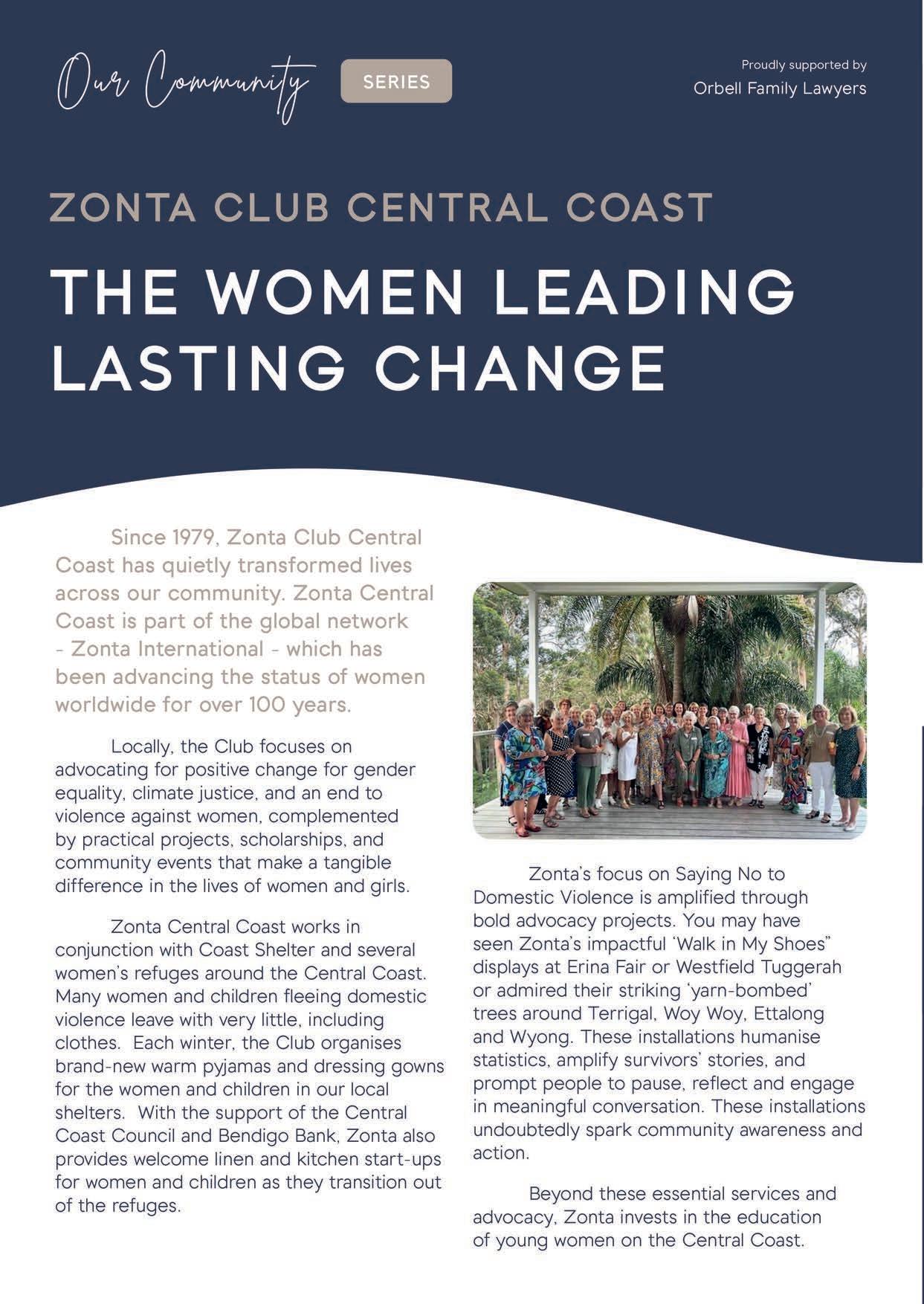
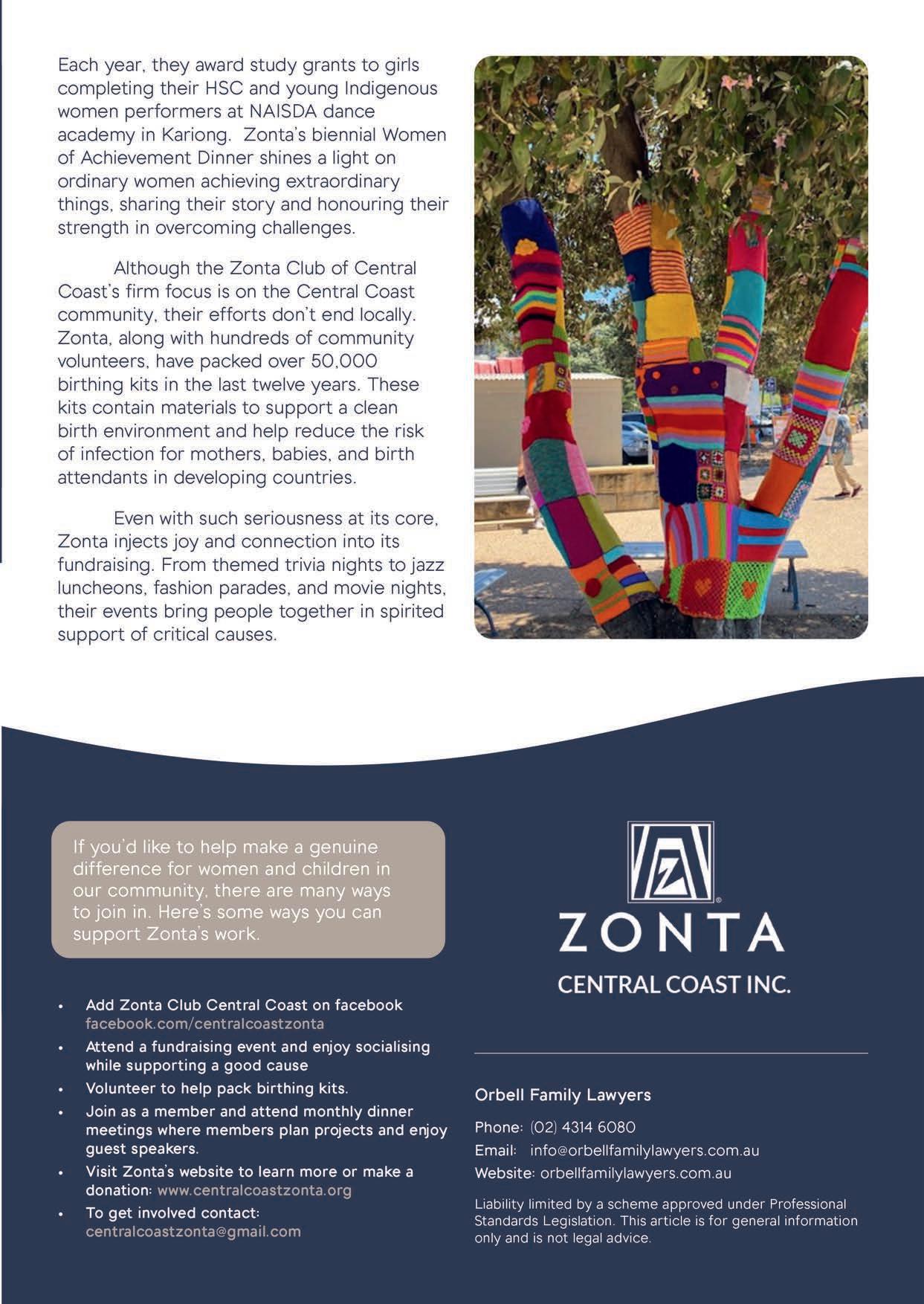

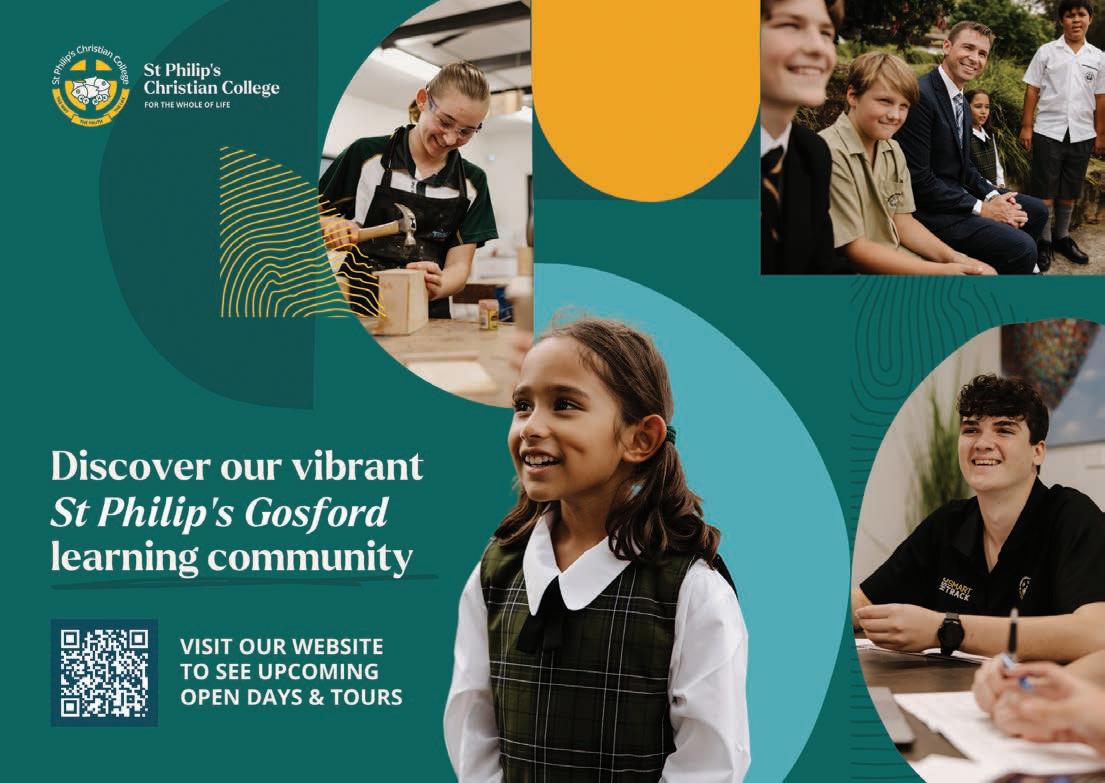
Celebrating community and culture at ChromeFest and The Lakes Festival 2025
This spring, the Central Coast will come alive with two of its most beloved events, ChromeFest and The Lakes Festival. Both these events offer a unique celebration of local culture, community spirit, and vibrant entertainment.
ChromeFest 2025, held from Friday 24 to Sunday 26 October at The Entrance, is a dazzling tribute to the golden era of chrome, rock ‘n’ roll, and classic cars. With over 400 pre–1979 vehicles on display, the event transforms the foreshore into a retro wonderland. Visitors can expect car cruises, Show n’ Shine competition, and live entertainment across five outdoor stages, featuring rockabilly and rock ‘n’ roll bands that capture the spirit of an era gone by.
Together, ChromeFest and The Lakes Festival highlight the Central Coast’s vibrant blend of nostalgia, creativity, and care for the environment
The festival kicks off with Chrome After Dark, a free Friday night concert that sets the tone for a weekend of vintage flair. Saturday brings the Saturday Night Jive, a ticketed event that promises high–energy dancing and retro fashion. Throughout the weekend, attendees can enjoy market stalls, fashion parades, dance demonstrations, and Pin–Up Pageant, making ChromeFest a multi–sensory experience for all ages.
Two weeks later, the Central Coast’s waterways take centre stage during
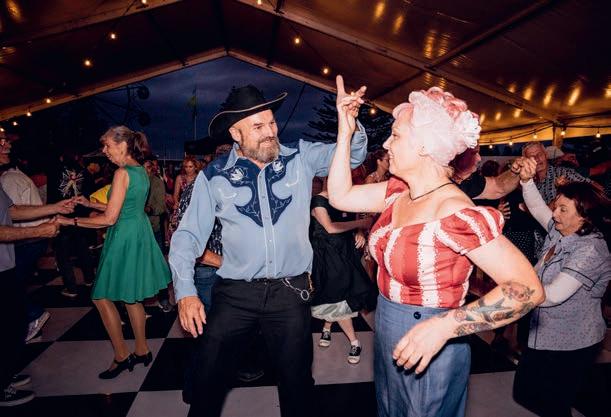
The Lakes Festival, running from Friday 7 to Sunday 16 November 2025. Now in its tenth year, this 10–day celebration spans the entire region, offering a diverse program of family–friendly activities, cultural showcases, and educational experiences that highlight the beauty and importance of local waterways.
The Lakes Festival is more than just fun – it’s a platform for sustainability and community engagement. This year, the festival continues its journey toward eco–consciousness, having completed the Strive 4 Sustainability Scorecard with Ecotourism Australia, and receiving the RH Dougherty Innovation in Special Events Award at the 2024 Local Government Week Awards. Initiatives include eco–friendly merchandise, recyclable materials, and a strong focus on environmental education.


For more information about the upcoming events, visit lovecentralcoast.com/events
The Lakes Festival
ChromeFest
Expect a vibrant mix of events such as Indigenous Fine Dining and seafood cooking experiences, kayak eco tours, art workshops, live music, and community festivals. The overarching theme –Activate, Educate, Celebrate – invites locals and visitors alike to rediscover the natural beauty of the Central Coast while learning how to protect it for future generations.
Together, ChromeFest and The Lakes
Festival highlight the Central Coast’s vibrant blend of nostalgia, creativity, and care for the environment. Whether you’re drawn to the roar of vintage engines or the serenity of lakeside activities, these events offer something for everyone. So, mark your calendars, gather your friends and family, and get ready to celebrate the best of the Coast this spring.
START TODAY, GROW TOMORROW: The power of early investing for families
BY SIMON TARRANT, PRIVATE CLIENT ADVISER AT MORGANS FINANCIAL LIMITED
When it comes to building long–term wealth, few tools are more powerful than compound interest. It’s a concept that financial advisors regularly champion. The sooner you start investing, the greater the potential to grow your wealth and create a secure financial future for your family.
WHAT IS COMPOUND INTEREST?
Compound interest is the process of earning interest on both your original investment and the interest it accumulates over time. It turns modest, consistent contributions into significant gains, especially when you begin early and stay the course.
Smart financial planning isn’t about getting rich quick it’s about starting smart, staying consistent, and letting time work for you.
WHY START EARLY?
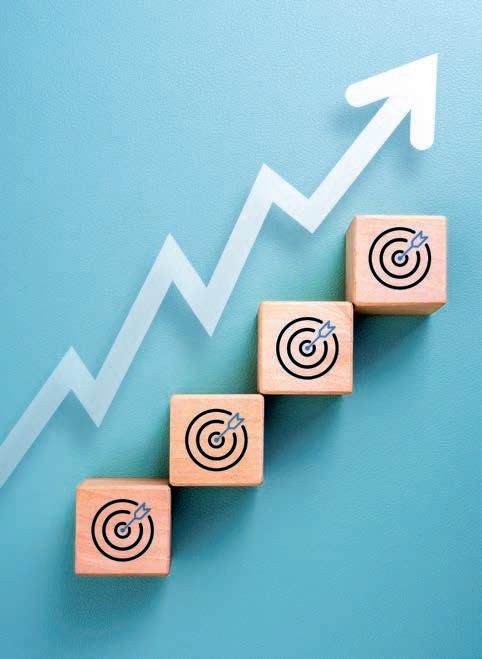
Let’s say you invest just $100 a month from age 25. With an average return of 7% annually, by age 65 you could have over $250,000. But if you wait until age 35? You might end up with only half that. That’s the power of starting early and sticking with it.
FIVE KEY BENEFITS OF STARTING TODAY
Time magnifies growth
The earlier you start, the longer
Compound interest is the process of earning interest on both your original investment and the interest it accumulates over time

your money has to grow. Even small amounts invested consistently can become substantial over decades.
Less financial pressure later Starting now means you can invest smaller amounts over time, rather than playing catch–up with larger sums in your 40s or 50s.
You learn as you go Investing early helps build confidence. You’ll gain valuable financial knowledge and experience without risking large amounts.
Teachable moments for kids (Building a financial legacy) Showing your children the value of
Let’s say you invest just $100 a month from age 25. With an average return of 7% annually, by age 65 you could have over $250,000
saving and investing sets them up with lifelong money skills.
Peace of Mind
Watching your investments grow steadily provides security. It’s a
The best time to start investing was yesterday. The second–best time? Today.
If you would like to discuss your family’s financial strategy, please contact Simon at simon.tarrant@morgans.com.au or via (02) 4325 0884
Email: erina@morgans.com.au
Visit us: Make an appointment at our new office in Erina 4/168 Central Coast Hwy, Erina 2260 We’d love to see you!
Simon Tarrant (AR: 001270872) is a Private Client Adviser at Morgans Financial Limited (AFSL 235410 /ABN 49 010 669 726). Simon is passionate about creating quality financial strategies that are tailored and customised to a clients’ lifestyle, financial goals and risk profile. Disclaimer: While every care has been taken, Morgans Financial Limited makes no representations as to the accuracy or completeness of the contents. The information is of a general nature only and has been prepared without consideration of your individual objectives, financial situation or needs. Before making any decisions, you should consider the appropriateness for your personal investment objectives, financial situation or individual needs. We recommend you see a financial adviser, registered tax agent or legal adviser before making any decisions based on this information.
comfort knowing you’re preparing for your family’s future, step by step.
If you’re unsure where to begin, financial advisers can guide you through tailored strategies that fit your goals, lifestyle, and values.
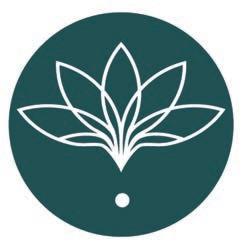
avocanaturopath.com.au
naturopathdiana@gmail.com

How to avoid “cookie cutter”
BY SAM & JORDI WOODS


In a world where anyone can be regarded as an expert – thanks AI and social media – many creative talents have become mainstream and generic. As an experienced Brand Stylist, Brand Coach and Entrepreneur I (Sam) have found that many specialists are trying to be everything to their clients in order to keep pricing low and take a larger share of the market. When styling a brand and creating a business image the following professionals each play a role and bring their talents to the end result.
PHOTOGRAPHER: is there to ensure the best lighting, angles, poses and ambience is captured. They will also be able to clean up your photos so they can be used across many media channels including large posters, magazines, social media and websites. Professional photographers are not there to style and select your outfits!
A PERSONAL STYLIST (preferably one who specialises in branding): chooses the best colours, clothing, accessories and props that personify and define the talent’s personality, body shape and brand. A professional and experienced stylist will make sure their clients look their best but also they bring an element of individuality and point of difference to the end result. A stylist also ensures the talent stands out and their brand message is clear, not just that they look good. Also if a stylist has worked on fashion shoots (I speak from experience) they will be able to assist with poses to ensure garments sit, drape and flatter the best way possible.

GRAPHIC DESIGNER: they will prevent you from looking like a Canva cut out. Yes by all means use Canva to save money and DIY but be sure to engage an expert designer for your logo and any icons. This will ensure you have an individual and unique brand identity.
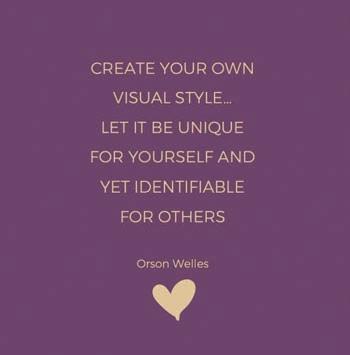
MAKEUP ARTIST: use a professional and ensure they use professional photographic makeup – it makes a huge difference to end results. Jordi and I wear professional makeup even when only a natural makeover is required, so don’t think professional makeup means “made up” or heavy – it is quite the opposite, a good quality, professional makeup will be light reflective and luminous in all the most flattering ways.
As you can see it takes many professionals to create a successful brand and photo shoot so if you don’t want cookie cutter images but rather a branding that ensures you are attracting plenty of ideal clients, I can say from styling many clients myself and my own brand the past 2 decades…it is worth the investment and often not as costly as you would be led to believe!
Stylishly Yours, Sam & Jordi xx
Understanding styling and fashion is one thing. Having a super natural flair for making everyday people look incredible is another. Once you’ve met Sam and Jordi Woods, it’s hard not to catch their infectious passion for dressing to match your own lifestyle, personality and charisma. Through their consultancy ‘Vibrant Concepts’, Sam and Jordi have transformed the lives of thousands. Let Sam and Jordi show you how to look and feel fabulous everyday at their Style Studio in Erina – learn the art of illusion dressing, colour matching, styling, translating fashion trends and savvy shopping with their unique VC Signature Styling Systems and services that are truly personal and really work! To contact Vibrant Concepts phone 0425 221 676

Staying healthy physically, emotionally and mentally during the holiday season – A naturopathic approach
WRITTEN BY DIANA ARUNDELL – THE AVOCA NATUROPATH & NUTRITIONIST
For people who have enhanced their health through positive diet and lifestyle habits, the Christmas and holiday season can create stress about ‘undoing’ all the good work. Optimal health is all about balance as well as feeling happy, so not allowing oneself to enjoy special occasions can be a bit of a misery trap.
Naturopathically, balancing strong foundations of health is always the key and these foundations include nutrition, water, sleep, exercise and de–stressing/ joy/happiness. These foundations sustain our health all year around, holiday season or no.
Christmas and holiday time is all about special traditions, celebration, sharing and experiencing the people in your inner circle. Celebratory food is certainly part of this, but it is just a part of the whole experience. It is no fun nor is it good for your health to ‘restrict’ or feel guilty about eating special food, its simply about being mindful about what
feels good for your individual body and overall health. If Christmas holiday time is a stressful time for you, try doing things a little differently this year and checking in with your own foundations of health and wellness.
Nutrition
Christmas holiday season usually brings with it exciting traditional food and celebrations. When it comes to nutrition, it’s all about balance and when it comes to food, it’s about quality, not quantity. Stick to one plate so you can be mindful of your portions. Take time to look at, smell, appreciate all the colours and tradition that appear on your plate. Eat slowly and remember that the food is part of the special occasion, not the occasion being part of the food. Try and stick to 80% of your plate being filled with vegetables/ salad (as many colours as possible), 20% protein and then small amounts of all the other delicious accompaniments. Mindfully chew and acknowledge the tradition of what you are eating and of course honour who spent time preparing it for you.
Do not fall into the trap of mindlessly eating huge amounts of food or eating to be polite. Your health is a priority, and
your body is counting on you to look after it. Fill up on the healthy choices and this will crowd out the less healthy options such as nutritionally deplete snacks and sweets. Even just a small serving of desert can be very satisfying if savoured and eaten mindfully.
Overeating on the pre–dinner snacks such as hefty cheese platters or chips can be difficult to manage for some people and it’s always an option to bring a starter platter that you feel comfortable eating. Colourful vege sticks with avocado dip or humus, fruit, nuts, rice crackers, different coloured olives can create a colourful, nutritious, grazing platter adding much more value to your health than artificially flavour–enhanced chips.
Christmas can leave us with an over–supply of chocolate and sweets that people gift when they come to visit. Consider taking flowers or something that is going to add value to someone’s health. Make it good quality dark chocolate or a beautiful, colourful, fresh fruit platter with seasonal fruits such as berries, mangos and cherries.
Just in the same way that you may not want to be pressured into eating

When it comes to nutrition, it’s all about balance and when it comes to food, it’s about quality, not quantity. Stick to one plate so you can be mindful of your portions. Take time
to
look
at,
smell, appreciate all the colours and tradition that appear on your plate
and drinking things you don’t want to, there’s no need to convince anyone else about what they should be doing to better their health. As they say, stay in your own lane and simply be the change you want to see in you.
Water
Staying hydrated is essential for physical and mental health. Aim to drink a litre of water before 12 noon and a litre of water before 5pm. Adequate water intake will help counteract the dehydrating effects of alcohol and support good elimination via the kidneys and bowels. At times we can
mistake dehydration for hunger which can lead to unnecessary snacking. Remember the good old rule of alternating one alcoholic drink with one glass of water.
When it comes to drinking alcohol, there are some healthier options that are lower in sugar and may lead to less bingeing and feeling unwell the next day. Consider cleaner options such as white spirits (gin and vodka) mixed with plain mineral or soda water with fresh lime. As it’s less sweet, it won’t be as easy to consume. Avoid higher sugar mixers such as tonic/soft drink, pre–mixed flavoured mineral water and ciders or too much beer. Saying no to soft drinks generally is a good way to reduce sugar or nutritionally void chemicals.
The other option to reduce excessive alcohol intake is to volunteer to be the driver. It can give a different perspective on life at this time of the year!
Sleep
Remember to take time to sleep, rest and rejuvenate the body, especially if you are taking time off work. Don’t be afraid of saying no to a few things in order to take time for your own health. Taking care of yourself is not selfish. Saying no because you can’t be bothered is
different to saying no because you’re exhausted and need time to rejuvenate yourself.
Exercise
It can be difficult to avoid consuming much more food than usual during the Christmas period and often when we have larger portions, it can contribute to tiredness, lethargy and just wanting to collapse on the couch. The best thing you can do if you’ve overeaten, is move your body and go for a walk. It will help balance blood sugar levels and support digestion. In any case, leave the phone at home and take in the beauty of nature around you. The temperature of the air, the types of trees and colour of the leaves and any wildlife you may notice when you’re aware.
De–stress/joy/happiness
If you are one of the people that feels you must do it all – the organising, the shopping, the cleaning up…. Please let people help, have fun and most of all don’t take yourself too seriously. Keep perspective about this time of year, stay humble and consider that burn out may be a sign of over–ambition. Stop, breathe and consider a new perspective.
For further information or to make an appointment please visit avocanaturopath.com.au
Diana is a university qualified naturopath practicing on the Central Coast since 2002. Her goal is – helping people create healthier, happier lives combining the best of traditional wisdom and modern science while addressing physical, emotional and mental wellbeing from the inside out, through conscious health alignment. Diana has a love of education (teaching and learning) and was a lecturer of Nutrition at Macquarie University and also taught clinical skills at the University of Newcastle. She received the Dean’s award for ‘Academic Excellence’ whilst studying the Bachelor of Health Science (Complementary Medicine) at Charles Sturt University.



Gratitude, Hygge and the measure of happiness
BY SELINA CHAPMAN, PSYCHOLOGIST
Every year there is a World Happiness Report focussing on an aspect of happiness. The report is issued annually and compares any differences in happiness over time, considering global factors such as war and the Covid pandemic.
This year the focus is on how caring and sharing can affect happiness, quoting Shakespeare stating caring is “Twice blessed” from the play Merchant of Venice, meaning both the recipient and the giver benefit from caring and sharing.
This can be interpreted differently if you spend any amount of time with toddlers, however globally speaking we can all gain from meaningful social connections, and community–based choices that have a clear positive impact.
Countries achieve a global ranking based on how individuals have rated their own “life evaluations”, a scale out of 10 with 10 being the highest ranking. Life evaluations comprise of questions relating to quality of life, rather than emotion–based responses as being “positive or negative”.
In the 2025 report, 147 countries were ranked, typically with Nordic countries consistently ranked in the top 10. Australia was ranked at number 11. Since the rankings began, we have learnt that happiness changes over time and is categorised via areas such as social support, freedom to make like choices, generosity, and perceptions of corruption. So, what contributes to happiness?
The report specifies that sharing meals, living with others, maintaining positive social connections, living in a society that supports each other, knowing who and what we can trust and how we give to others financially increases or reduces our happiness scales.
Looking at this further, I wanted to explore how culture, in its base definition of how we interact psychologically–socially and biologically with our environment, and the people in it, plays its role in happiness. What do the Nordic countries do that works so well and what can we learn from them? What can other cultures and philosophies teach us?
To be completely transparent, this article cannot contain all the information research has discovered about the complex nature of culture, however we can always learn something and share that with others, “paying it forward” for the betterment of us all.
Hygge, pronounced hoo–gah, is according to Denmark.dk is “hard to pronounce [and] difficult to explain”. It’s about social connections, enjoying each other’s company with no set plan apart from being with each other, unwinding, celebrating the small moments and taking it slow, maybe talk deeply, or reflect upon the world in solitude.
Social connections, in any shape that works for us, can make us who we are, helping establish our sense of self, and how we may build, nurture and navigate relationships. This is most significant during adolescence. A study on gratitude and students by Bono and Froh (2009), included a quote from a student participant who wrote “My life wouldn’t be the same without the people that have shaped and molded my character … I think it is important to be humble, let go of all ideas of self–importance and acknowledge the people that helped you get where you are”.
Supportive social connections are a fundamental need that can break or make us. Traditional cultural living relies on community interactions that benefit the group as a whole rather than putting any one individual above others, to the degree that groups simply cannot exist without meaningful social interactions,
social support and a sense of belonging.
Bono and Froh, 2009, found that gratitude can boost mood, strengthen social ties, and cultivate a sense of purpose, all aspects of which are included in the World Happiness study.
Gratitude can be expressed in many ways, fostering bonds and creating happier communities. How can we embrace gratitude, experience hygge and become happier?
Studies and evidence–based practise have not exhausted all possibilities; however, we have many options. As always, the most beneficial solutions to any of our challenges must come from within ourselves and have relevance and meaning to our own values and self–identity.
At a time of global uncertainty and flux, we can feel that there is too much that is out of our control. This can leave us feeling overwhelmed, lost, and sad. The World Happiness report details how positive social behaviours and connections can reduce feelings of despair.
“Happiness is when what you think, what you say, and what you do are in harmony” – Mahatma Gandhi.
Mindfulness, valuing ourselves, warts and all, and adjusting the areas we want to be different, can open the space and opportunity for meaningful change and happiness.
A useful and Australian resource is the Action for Happiness movement. Every month has a free calendar to download and share for kind, positive and self–care–based actions to complete daily. You can find them at Happier Kinder Together | Action for Happiness. actionforhappiness.org
Take Care, Selina
Selina Chapman is a psychologist at The Heart and Mind Collective in North Gosford. She works with individuals of all ages seeking empowerment and support. Selina says, “Seeking support for mental health is about maintaining emotional and mental wellbeing as well as having extra help as and when we need it”.
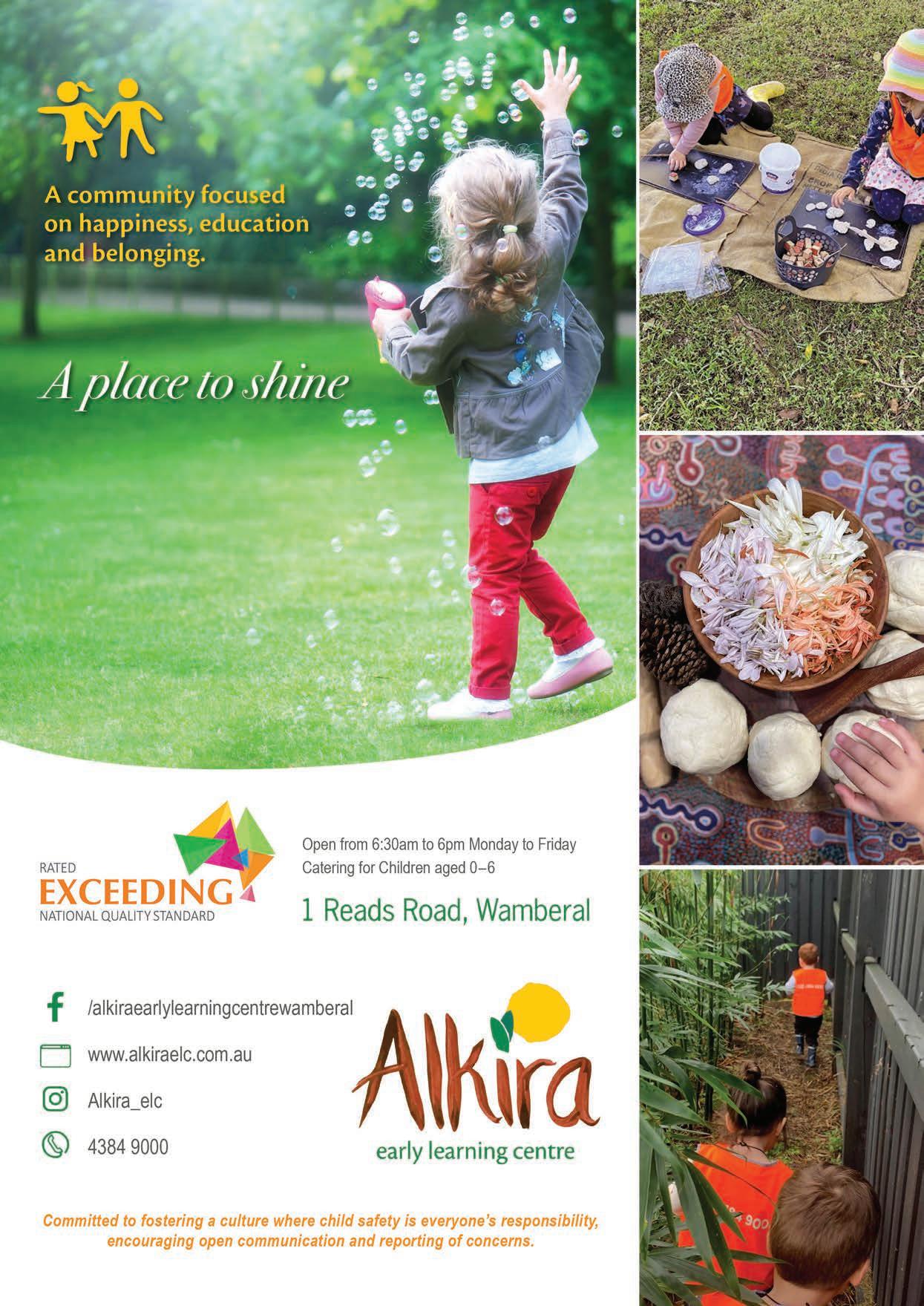
SIMPLE DINNERS EVERYDAY
With more than 3 million followers, Nicole Maguire of Simple Dinner Edit is loved for her flavour–packed, family–friendly dinner ideas, from cosy bakes that cook themselves while you get on with your day, to one–pan wonders (maximum flavour and minimal clean–up), and surefire, no–fuss favourites ready in under 20 minutes.
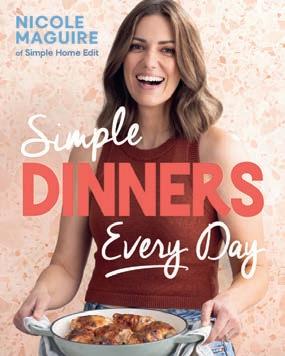
Now, in the follow–up to her bestselling Simple Dinner Edit, Nicole shows us that planning for the week doesn’t just make life easier; it saves time, money and a whole lot of stress. And it doesn’t have to be complicated – just a few small steps can make all the difference. With a bit of weekend prep, smart shopping hacks and a bank of core meals, you can reclaim your weeknights and enjoy delicious dinners – every single day.
Published by Plum [through Pan Macmillan Australia] RRP $44.99 paperback Publication 30 September 2025.
It’s time to make things easier. Kitchen superstars: the staples that make life easier. Shop smarter, not harder. Kitchen organisation.

Kitchen equipment: fewer, better, smarter. Keeping your kitchen clean without losing your mind. And 100 family–friendly dinners.
Nicole Maguire is the home cook behind the hugely successful online hub Simple Home Edit, where she shares clever ideas for saving money, streamlining and decluttering your home, as well as delicious family recipes using everyday ingredients. With more than 3 million followers, Nicole is a trusted voice online when it comes to eating well for less. Nicole lives in Sydney with her husband and two young children.
simplehomeedit.com instagram.com/simple.home.edit tiktok.com/@simple.home.edit
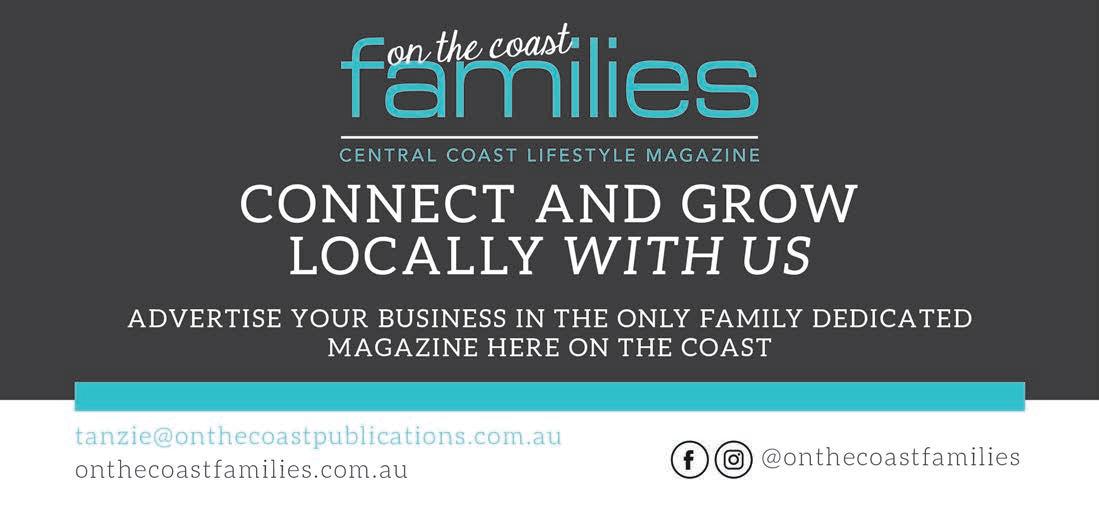
Nicole Maguire of Simple Home Edit
REAL ESTATE IS SEXY NOW!
Why property sellers should embrace it
BY BLAKE GRAY, PRINCIPAL AT APEX ESTATE AGENTS

You’ve been caught! Curiosity got the better of you. Don’t be ashamed. There’s no turning back now. You saw ‘sexy’ in the title and decided to read on…didn’t you? After all, add the word ‘sexy’ to virtually anything, make it bold, perhaps change the colour and you’re sure to attract extra attention. In and of itself this is the point of today’s piece – namely that ‘sexy’ sells.
I put it to you that in all its facets the once relatively niche subject of real estate has transmogrified before our very eyes – particularly over the last decade and a half – and in doing so has now become a sexy subject. By this I mean to say that it has firmly captured the public consciousness by providing some of the most alluring, exciting and all–encompassing content currently available for consumption. Ultimately with the express purpose of giving you what you desire. Admittedly I’m being slightly tongue–in–cheek in my approach, but ‘sexy’ takes many forms. Let’s take a closer look at how this transformation occurred and why property sellers should be embracing it.
The Position – How we got here If given 30 seconds to do so, how many real estate related reality shows, brands, podcasts or personalities could you name? I dare suggest you’d be able to identify at least half a dozen. Do you consider yourself to be particularly active in and knowledgeable of the workings of the property market? For many of you the answer is likely to be, ‘no’. This may go some of the way to illustrating the idea that real estate has, in fact, been quite successful in making itself increasingly relevant to much larger audiences – especially those whom otherwise would not have actively engaged with real estate in its more traditional framework.
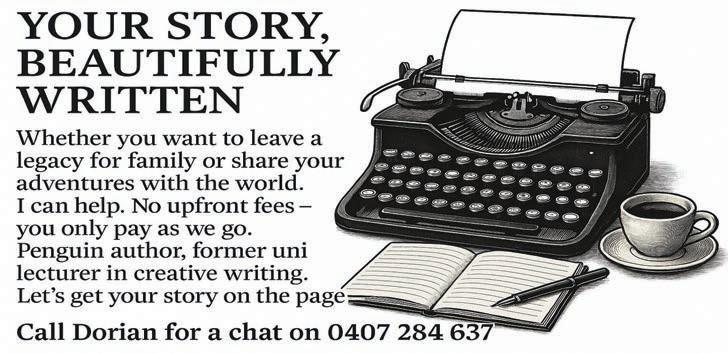
As with many things the rise of reality television, social media and other platforms like YouTube have significantly contributed to its expansion and appeal. In short, technology has changed the landscape for real estate. Its reach has traversed the online space and
Here
we see the emergence of a new wave of celebrity. Any salesperson with an aptitude for curating an audience in this real estate space has by definition displayed their ability to build value
with fierce speed and accuracy too. For the general consumer this means more relevant content to absorb. For property sellers this landscape has opened the door to a wealth of readily accessible tools, practical information and industry professionals.
Fantasy and Escapism –
A new wave of celebrity
How many celebrities do you follow on social media or via some other means? Why do you follow them? It’s not controversial to say that our fascination with celebrity remains strong and for a litany of reasons – we develop crushes; fantasise about them; we admire their skills or traits such as confidence and humour; we partake in the drama they can create; we crave the escapism that they facilitate and so on. One no longer needs to be a billionaire property developer or prominent businessperson to garner notoriety in the eyes of the public as a real estate personality. It is now increasingly the case that real estate agents, auctioneers, buyers agents and even professionals in allied disciplines such as building, sales coaching, landscaping, architecture, interior design and photography are using the online space to popularise their discipline, elevate their reach and achieve fame. Here we see the emergence of a new wave of celebrity. Any salesperson with an aptitude for curating an audience in this real estate space has by definition displayed their ability to build value. This level of business acumen should be highly regarded by anyone looking to sell their property.
Size Matters –
The loudest mic reaches farthest Do you find the amount of noise created online and in the wider world to be endless and deafening at times? People competing for attention – in some basic sense that’s all it is. The more followers, listeners, views, subscribers, likes, shares and comments you accumulate, the greater your social currency. Such is the nature of the internet, engagement begets engagement. In other words the loudest microphone reaches the most people. So how does this benefit you if you’re looking to sell your property? Selling is a numbers game. The more exposure that your property gets, the better. When it comes time to sell, consider a salesperson, team or brand with established, superior social currency. Even though you may not consume the type of content they produce, remember that their social capital will automatically become one of your greatest assets and tools in the sale of your home.
Vicarious Pleasure –
Stories & emotion at your fingertips
Have you ever felt excited for someone else, or felt the tension in the air when witnessing an argument? Have you cried while listening to music or song? Do you know the satisfaction that comes from reading poetry or other forms
Blake Gray | Principal APEX Estate Agents – Blue Bay 0448 822 123 | bg@apexestateagents.com | apexestateagents.com bg_mylifeinrealestate @unlockedwithblake
APEX Estate Agents are a team of avant–garde real estate specialists, marketing experts, and consummate professionals absolutely obsessed with challenging the status quo. We exist to be the ultimate custodians for our clients, thus improving their quality of life through property – that’s our

of literature? Have you experienced an adrenaline rush as a consequence of watching sports? If you have then generally speaking you understand what it means to experience something vicariously – through the experiences or actions of another person. Real estate is perhaps more about story than it is showmanship. It has precisely evolved its content, marketing and message to include all the emotions and pleasures listed above. That’s not all. Perhaps one of its most impactful adaptations has been to directly attach itself to other things that consumers are already attracted to, each of which has its own specialised market – luxury cars; fine cuisine; love of travel and exotic destinations; celebrity; fashion; online learning resources etc. Thus real estate has become synonymous with all these things. As a result its finger is firmly placed on the public pulse. It is the coalescence of the above and much more that makes for a powerful and addictive stream of content. Emotional resonance drives buyer demand which means quicker decisions and stronger offers from buyers.

raison d’être.


How Red Light Therapy supports skin health and recovery
If you or someone in your family lives with eczema, psoriasis, or even recurring skin flare–ups tied to stress or seasons, you’ll know how relentless these conditions can feel.
Between the itching, irritation, visible flare–ups and disrupted sleep, chronic skin issues don’t just affect your body - they can drain your energy and confidence too.
That’s one of the many reasons Coastal Rehab Hub has introduced the Prism Light Pod, a world–leading, full body red light therapy system that’s safe, non–invasive, and now available at their Wellness Centre in Erina.
Unlike topical creams or medications that only treat the surface (and often come with unwanted side effects), red light therapy works at a deeper level – stimulating your body’s own healing processes from the inside out. By delivering targeted red and near–infrared light wavelengths to the skin, the Prism Light Pod activates the mitochondria within your cells (think of them as your body’s natural battery pack). This boosts energy production (ATP), improves circulation, calms inflammation and helps skin repair itself more effectively.
“Chronic skin conditions like eczema and psoriasis are so much more than just surface irritation,” says Kate Perkins, Occupational Therapist and founder of Coastal Rehab Hub. “They’re tied to immune responses, inflammation, and stress – all things that red light therapy can help regulate gently and safely. We’ve seen real results in skin health, and just as

importantly, in people’s confidence.”
Regular sessions in the Prism Light Pod may support:
Reduced inflammation and redness.
Relief from itchiness and irritation.
Improved skin hydration and barrier function.
Faster healing of damaged or sensitive skin.
Smoother texture and reduced scaling.
Fewer flare–ups and longer periods between them.
Calmer immune response and reduced nerve pain.
More youthful–looking skin, thanks to collagen stimulation.
By addressing the root causes of inflammation and immune imbalance, red light therapy does more than just soothe symptoms – it helps the skin restore balance, naturally. And because the Prism Light Pod treats the entire body in 15–minute sessions, it’s perfect for parents and caregivers looking for something that works with their busy schedules.
The team at Coastal Rehab Hub have seen an amazing reduction in inflamed skin conditions following a series of
Unlike topical creams or medications that only treat the surface (and often come with unwanted side effects), red light therapy works at a deeper level –stimulating your body’s own healing processes from the inside out
Prism Light Pod sessions. If you haven’t experienced red light therapy before, they recommend starting with an initial 10–session package to achieve the best outcomes.
Gentle enough for irritated skin and powerful enough for whole–body recovery, full–body red light therapy is making waves across wellness clinics and integrative health spaces worldwide – and now, it’s here on the Central Coast.
Book your session or learn more at coastalrehabhub.com.au or call (02) 4312 7033
TRAVELLING WITH CHILDREN AFTER SEPARATION: A practical guide
BY SHEREE ORBELL, SOLICITOR/DIRECTOR AND MIA EDDY, PARALEGAL AT ORBELL FAMILY LAWYERS
As the Christmas holidays approach, many families begin planning long–awaited trips. For separated parents, though, organising travel with children can be more complex. Whether it’s a quick interstate getaway, a week at the beach, or an overseas visit to relatives, extra thought and care is needed. Travel can be a wonderful opportunity for children to create memories, connect with extended family, and experience new places, but only if the arrangements are made in a way that keeps their wellbeing front and centre.
At Orbell Family Lawyers, we regularly work with parents navigating these issues. Sheree Orbell, Solicitor Director and Mia Eddy, Paralegal, explain why separated parents should plan early, communicate openly, and always keep the child’s best interests as the guiding principle.
ORDERS AND PLANS: KNOW YOUR OBLIGATIONS
The first step is always to check whether Parenting Orders or a Parenting Plan are in place. These documents often contain specific travel provisions, such as:
Who holds the child’s passport.
Conditions for travel, including notice periods and communication requirements.
Limits around travel windows (for example, school holidays only).
Whether written consent from the other parent is needed.

Failing to comply can cause significant issues. Not only might it disrupt a child’s routine, but it could also lead to disputes or even legal consequences. Before booking flights or accommodation, parents should carefully review any Orders or Plans. If anything is unclear, it’s wise to get advice early. It’s much easier to resolve questions before a trip than in the middle of one.
OVERSEAS TRAVEL:
MEANINGFUL BUT MORE COMPLEX
Overseas trips are often planned to help children maintain connections with grandparents, cousins, or other family who live abroad. Courts generally support these opportunities, recognising their cultural and emotional value.
But international travel does introduce added layers of risk. If one parent disagrees with the trip or worries about the child not returning, disputes may arise. In some situations, concerns about child abduction can be raised and that can stop a trip in its tracks.
THE HAGUE CONVENTION: WHY IT MATTERS
Many Parenting Orders or agreements limit overseas travel to countries that are part of the 1980 Hague Convention on the Civil Aspects of International Child Abduction. This treaty provides a framework for children to be returned if they are taken overseas without consent.
Not all countries are part of the Convention. Popular family holiday destinations such as Indonesia, Vietnam, and China are not signatories. If a child is taken to a non–Hague country, it may be extremely difficult, or even impossible, to secure their return through international legal channels.
For this reason, many parents agree (or courts require) that children only travel to Hague Convention countries. This helps reduce risk and offers both parents peace of mind.
INTERSTATE TRAVEL: EASIER, BUT NOT RISK–FREE
Travelling within Australia is generally simpler, but it still requires cooperation. Even for short trips of say, a week in Queensland or a weekend in Melbourne, transparency is vital. Surprising the other parent with last–minute travel plans is rarely well received and can fuel mistrust or conflict.
A simple practice, like sharing the itinerary, accommodation details, and contact information, can prevent unnecessary disputes. It also reassures the other parent that the child’s wellbeing is being looked after.
SHARING THE SEASON WITH CARE
Christmas holidays are a time when many families want to travel, but they also come with heightened emotions. Orders often set out exactly how holiday time is to be shared, which may mean Christmas is divided between both parents. This requires careful coordination, especially when travel is involved.
When planning Christmas travel, consider:
School holiday clauses: Orders may limit travel to official school breaks.
Shared time: Christmas Day or week may need to be divided.
Costs: Flights, accommodation, and travel insurance can add up quickly. Discussing how expenses are shared
avoids last–minute disputes.
The child’s experience: Long flights, jet lag, or missing family traditions can be stressful for children. Balance travel with their need for comfort and stability.
AVOIDING CONFLICT THROUGH COMMUNICATION
The golden rule for separated parents is clear: communicate early, openly, and respectfully. Good communication might include:
Providing detailed itineraries.
Agreeing on how the child will stay in touch with the other parent while away.
Discussing what happens if an emergency arises.
Using shared calendars or written agreements to confirm arrangements.
If disagreements can’t be resolved, mediation may help before things escalate. Even in high–conflict situations, clear communication channels can make travel smoother for the child.
PUTTING CHILDREN FIRST
Ultimately, every travel decision should be guided by one principle: what’s best
for the child. That means:
Preserving the child’s relationship with both parents and extended family.
Minimising disruption to schooling and routines.
Keeping safety and wellbeing at the forefront.
Shielding children from conflict or adult disputes.
When parents take a cooperative, childfocused approach, holidays become what they should be: a chance for children to relax, explore, and make joyful memories.
TURNING PLANS INTO MEMORIES
Whether you’re planning a beach holiday, a trip interstate or an overseas journey, travel after separation requires thoughtful planning. By respecting Parenting Orders, communicating openly, and keeping the child’s needs front and centre, separated parents can turn travel into a positive experience that strengthens family bonds.
If you’re uncertain about your rights or obligations around travel, seeking legal advice early is always a smart step. At
Orbell Family Lawyers, we’re here to guide you through the process so your family can focus on enjoying the journey ahead.
NEED HELP WITH HOLIDAY TRAVEL PLANS?
If you’re planning travel with your children after separation, it’s important to understand your legal rights and obligations before you book. At Orbell Family Lawyers, our experienced team can guide you through Parenting Orders, consent requirements, and travel disputes, so you can focus on making the holidays special for your family.
Mention this article when you call to receive a free 15–minute discovery call with one of our family law solicitors. Ph (02) 4314 6080 orbellfamilylawyers.com.au info@orbellfamilylawyers.com.au
Liability limited by a scheme approved under Professional Standards Legislation. The information contained in this article is provided for information purposes only and should not be construed as legal advice.
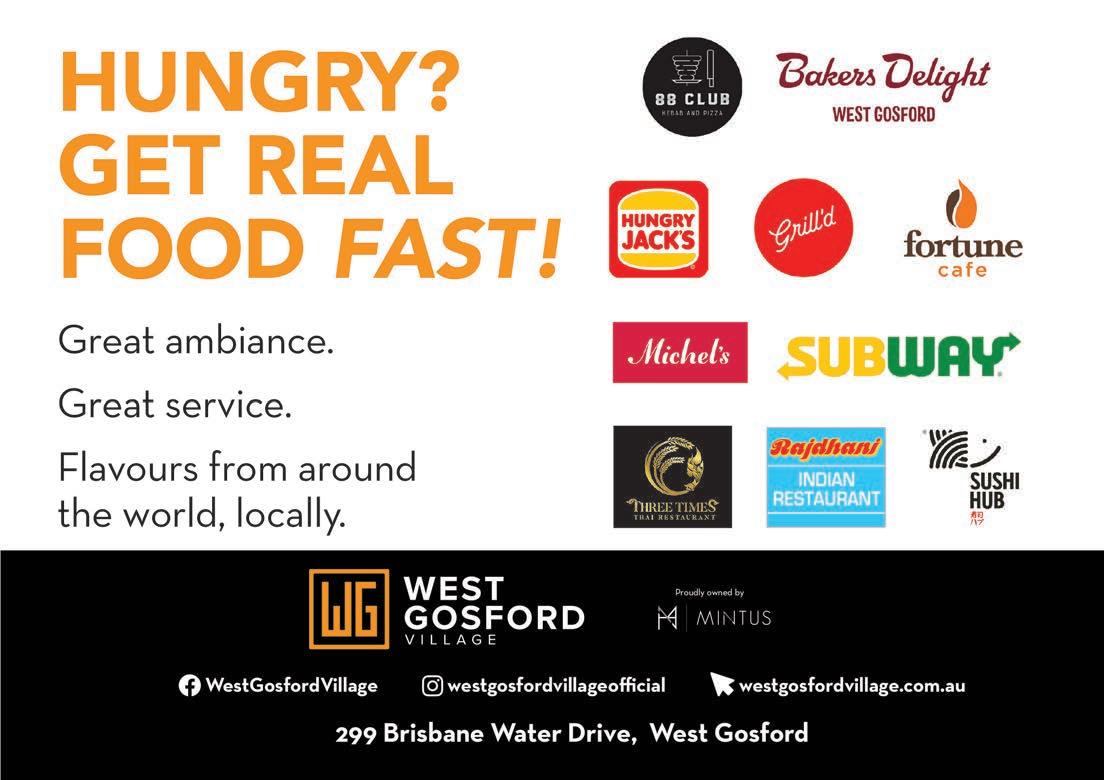
Calm in the Parenting when emotions run high
BY SALLY HAMER – FOUNDER/FAMILY COUNSELLOR AT HELP YOUR KIDS GOSFORD
“Can you please just be quiet for one second!” I shouted at my children, without even realising that I was now yelling too.
“But Muuuum, he’s poking his tongue out at me!” my daughter whined.
“That’s it! I’ve had enough – you’re all driving me crazy. Go to your rooms, now!”
As they stomped away – one crying, one yelling, another sulking – I felt the heaviness of regret. Why couldn’t I stay calm? I hate it when I yell at them. What’s wrong with me? In my hardest moments, I even find myself wondering, Am I really a good mum? I love my kids deeply, and I want to be their safe place, but sometimes I wish it felt easier.
Parenting today can feel overwhelming. Search “parenting” on Instagram and you’ll find hundreds of experts urging us to be calm, gentle, or perfectly attuned. Turn on the TV and you’ll see shows comparing parenting styles as if there’s a single “best way” to raise a child. With all this advice around us, it’s easy to feel pressure to be the “perfect” parent.

But the truth is: family life is rarely picture–perfect. It’s messy, emotional, and unpredictable. Our children can bring us incredible joy and love –sometimes followed, only minutes later, by frustration, anger, or fear. These ups and downs are normal. When we’re in a good place emotionally, we feel confident and connected as parents. But when anger, shame, sadness, or fear take over, we often react in ways that don’t feel good, and we question ourselves afterwards.
That’s why so many parenting approaches highlight the idea of “staying calm.” Decades of attachment research show that children need us to be responsive, attuned, and safe –even when everyone is upset. Staying calm helps us do what matters most as parents:
Be parental – responding to our children’s needs, not just our impulses.
Protect connection and safety –showing our children that even big feelings don’t break the bond.
Model “emotion–informed thinking” – demonstrating that strong feelings are useful when paired with calm,

thoughtful choices about actions. This is what emotion regulation is. So what does “staying calm” actually look like in real life?
It’s not about never feeling anger, frustration, or fear – those emotions are natural and normal. We will lose our cool at times, and act in ways we regret because we’re human. In practice, staying calm means noticing our feelings and choosing parenting actions that align with our values. By pausing, tuning into our internal experience, and reflecting before we respond, we create the space to act thoughtfully rather than react impulsively.
It starts with being curious – not just about our children and why they act the way they do, but also about ourselves. Our emotions can flare so quickly that we react before we even realise what’s happening.
It’s important to learn how to slow down just enough to notice what’s happening inside us. This takes kindness and gentleness. Looking inward can be uncomfortable – especially when what we find is shame, rage, despair, or fear. These emotions often push us into fight mode (lashing out) or flight mode (wanting to shut down or escape).
A good starting place is non–judgmental acceptance. This means allowing space for all of your parent–related thoughts, emotions, memories, intentions, wishes, perceptions, judgments, and values – without trying to push them away, fix them, or label them as “good” or “bad.” Instead, approach them with curiosity. Wonder about them. Stay open–minded toward yourself.
By slowing down and acknowledging that you have an inner world – full of thoughts and feelings that shape how you make sense of your child and your family – you create the space to respond with greater calm. Here’s what that can look like:
PAUSE AND CATCH THE FEELING
Notice the emotion that’s bubbling up. Can you name it – anger, fear, sadness, shame? Where do you feel it in your body – tight shoulders, a racing heart, a lump in your throat? Instead of judging it or rushing to push it away, focus on it with curiosity. Ask yourself: Is this situation really an emergency? Or can I slow down and choose how to respond?
MAKE SENSE OF IT
Notice what your mind is telling you about this situation. Our brains are quick to jump to conclusions, often based on past experiences or bodily sensations. Try slowing this process down by asking different questions:
Why did my child do that?
What might they be thinking or feeling right now?
Is my reaction influenced – positively or negatively – by:
– my own experiences with my parents?
– how I see myself as a parent?
– how I see my relationship with my child?
If I try to take my child’s perspective, does it help me understand their behaviour and decide how best to respond?
Am I open to understanding their perspective? If not, what might be getting in the way?
CHOOSE YOUR ACTION
The meaning we make about our children’s behaviour – and about ourselves – shapes how we act. When we react automatically to strong feelings, we often say or do things we later regret. But when we understand what’s going on inside us, and how our feelings link to our thoughts and actions, we strengthen our ability to stay calm. This gives us the
power to act in ways that are aligned with our values and that meet the needs of our children, our families, and ourselves.
Staying calm in the chaos of parenting is not about being perfect, it’s about being present, reflective, and willing to try again. Our children don’t need flawless parents; they need parents who keep showing up, who repair after missteps, and who model what it looks like to grow as a human being.
Every time you pause, notice your feelings, and choose your response, you’re not only helping yourself, you’re teaching your child how to handle big emotions too. That’s powerful parenting.
So when you stumble (and you will, because we all do), remember: growth matters more than perfection. Each moment is another chance to realign with your values and strengthen your connection with your child.
You’ve got this.
in
stronger families where
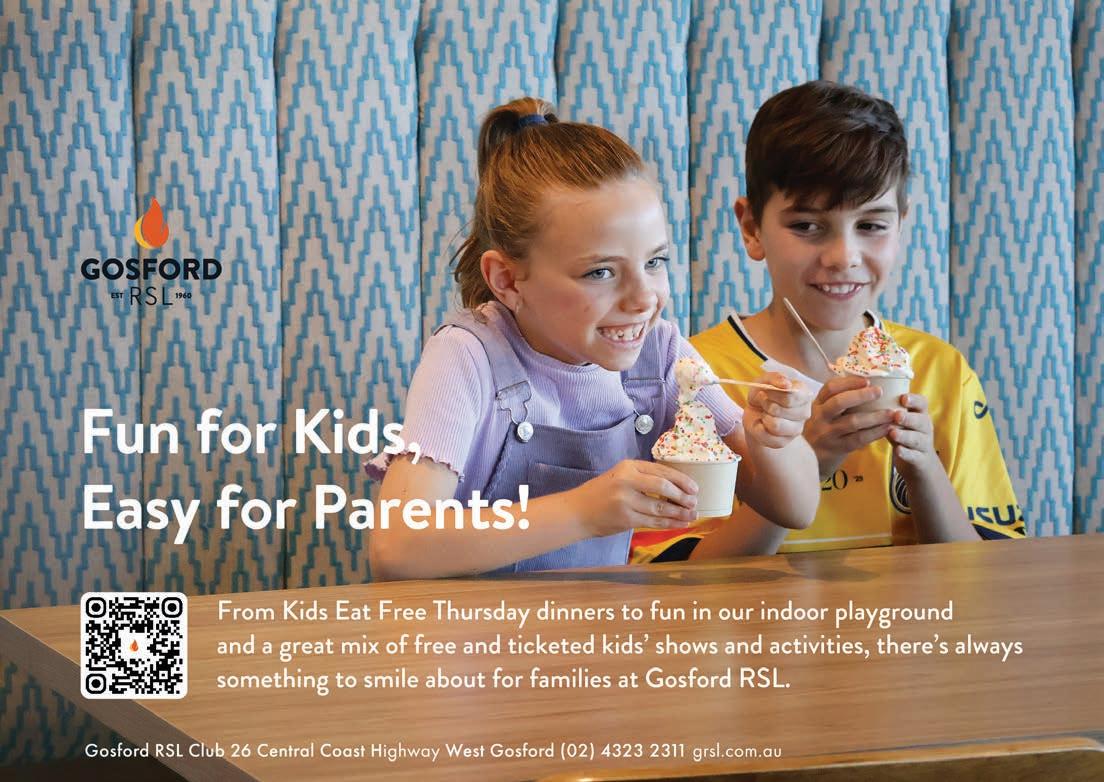
Sally Hamer, founder of Help Your Kids Gosford and mum of three, is an experienced family counsellor. She specialises
children’s behaviour and emotions, equipping parents with practical strategies and compassionate support to ease stress, build confidence, and create happier,
children and parents thrive together.
THINKING ABOUT CONTACT LENSES?
BY SAM SAVVA – PRACTICE MANAGER AT ADRENALINE OPTOMETRY
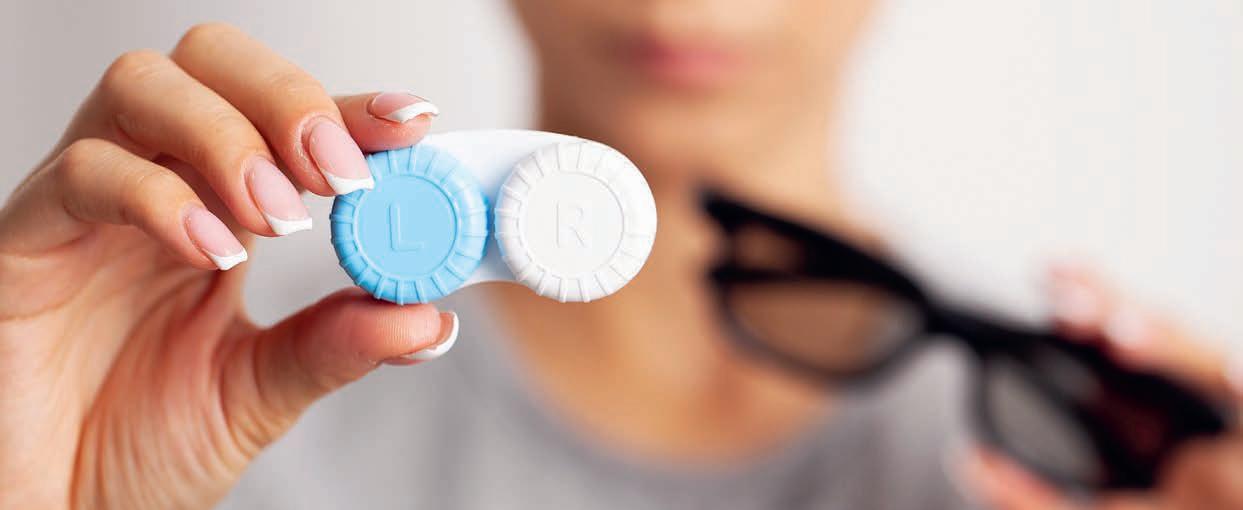
Contact lenses can be a fantastic alternative to glasses – whether it’s for enjoying your favourite sports, tackling work tasks, travelling along the beautiful Central Coast, or simply spending a relaxed evening out with friends and family. Living by the ocean, many of our patients love hiking, surfing, or strolling along the beach, and modern contact lenses allow you to do all this comfortably and effortlessly.
Today’s contact lenses are designed for almost everyone, children, adults, and even seniors so that everyone can experience clear, comfortable vision. Daily disposable lenses suit active people – they’re convenient, hygienic, and require no cleaning, making outdoor days hassle–free.
A professional contact lens fitting is essential to ensure your lenses are comfortable, fit correctly, and are safe for your eyes. During a fitting, your optometrist will assess your prescription, eye shape, and lifestyle needs to recommend the most suitable lenses and provide guidance on proper use and care.
Modern contact lenses are designed to keep up with your active lifestyle on the Central Coast. Many lenses now include UV protection to help shield your eyes from the strong coastal sun, and blue–light filtering to reduce eye strain from screens at work or home. There are also lenses specifically made for sports, swimming with goggles, or extended wear while travelling, so you can enjoy hiking, surfing, beach walks, and family adventures with clear, comfortable vision all day long.
Here are just a few ways contact lenses can make everyday life easier: As an alternative to glasses for clearer,
natural vision.
For children managing myopia (short–sightedness).
On weekends when you want to be glasses free.
While running, swimming, or playing team sports.
When reading menus or shopping without having to reach for glasses.
In healthcare, construction, or other fields where safety goggles are required.
While travelling, to keep things simple and convenient.
And if you’ve been told in the past that contact lenses weren’t right for you,

it may be time to take another look! With the wide range of options now available, we can help you discover lenses tailored to your lifestyle and vision needs.
Choosing the right contact lenses for you There are three main types of soft contact lenses: daily, fortnightly, and monthly. Each has its own advantages and disadvantages, depending on lifestyle, budget, and comfort.
Daily Disposable Lenses
Worn once, then thrown away –no cleaning needed.
Fresh, hygienic pair every day.
Lower risk of eye infections.
Comfortable for up to 16 hours of wear.
Great for part–time wearers or busy lifestyles.
Downsides: Higher cost long–term, more waste, limited prescriptions in some cases.
Fortnightly Lenses
Replaced every two weeks.
More cost–effective than dailies.
Good balance between convenience and affordability.
Require cleaning and disinfecting after each use.
Higher risk of infection if hygiene isn’t followed properly.
Monthly Lenses
Replaced once a month.
Most affordable option over time.
Wide range of prescriptions available.
Need strict daily cleaning and disinfecting.
Higher risk of infection from extended use.
Can feel thicker and less comfortable for some wearers.
Protein or allergen buildup may cause irritation.
For environmentally conscious patients, many daily disposable lenses now come with recyclable packaging, and some brands participate in recycling programs for used lenses and blister packs. Choosing eco–friendly daily lenses allows you to enjoy the convenience and hygiene of disposables while reducing your environmental impact – perfect for those who love spending time outdoors on the Central Coast.
In summary, daily and monthly contact lenses each present specific limitations that should be carefully evaluated in relation to an individual’s lifestyle, visual requirements, and ocular health. Your optometrist will provide tailored recommendations to ensure the most appropriate and safe choice for your eyes.
At Adrenaline Optometry, we offer contact lenses designed for specific vision needs:
Toric lenses for astigmatism – ideal for patients whose eyes are shaped in a way that causes blurred or distorted
vision. These lenses provide clear, stable vision for everyday activities.
Multifocal lenses – perfect for adults and seniors experiencing presbyopia, helping them see clearly at both near and far distances without needing separate reading glasses.
These advanced options allow patients of all ages to enjoy clear, comfortable vision and stay active in their daily lives.
We have our top 3 contact lens sellers. They include
Alcon Dailies Total 1 (dailies).
Cooper Vision, MyDay (dailies).
Johnson & Johnson, Acuvue Vita (monthly).
These contact lenses also cater for multifocal and/or astigmatism users.
At Adrenaline Optometry, we offer comprehensive eye examinations as well as dedicated contact lens consultations and fittings. Patients who complete a consultation or fitting with us will also receive 5x complimentary trial lenses per eye to get started.

Sam Savaa, Practice Manager at Adrenaline Optometry, is dedicated to helping clients find eyewear that not only looks great but also fits perfectly. A fan of daily contact lenses himself on weekends, Sam knows firsthand how convenient and comfortable they can be for an active lifestyle.
CITY OF LIGHTS A family adventure through Australia’s electric history
WORDS BY DORIAN MODE PHOTOGRAPHY BY LYDIA THORPE
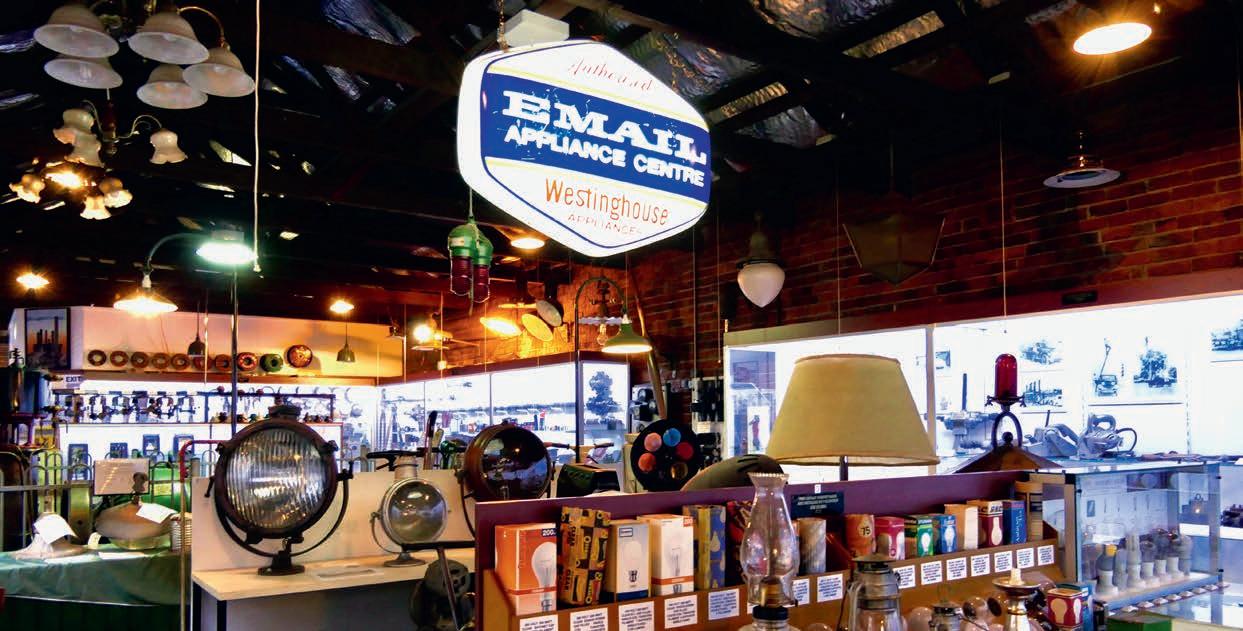
When Elizabeth Piper, the mayor’s wife, turned a small golden key in 1888, the good people of Tamworth stood awestruck. Today, when families visit this same spot, they’re mostly awestruck by how long it takes to get decent phone reception.
The night everything changed Picture November 9th, 1888: families gathering in the gathering dusk, children pressed against their parents as the town prepared for something unprecedented. The mayor had witnessed this “electric light” business in Paris and convinced the council to take a punt on the future.
Elizabeth Piper approached a small golden key. The crowd held its breath – probably the last time in human history that an entire population waited patiently for anything without checking their phones.
Fifty–two streetlamps burst into brilliant life. Children squealed. Adults stood slack–jawed. To celebrate, they organised a footrace under the lights with a 100–pound prize, because apparently even groundbreaking technological achievements require competitive running.
Tamworth had just become Australia’s first electrically lit city. Sydney wouldn’t catch up for another 20 years, which probably explains why Sydneysiders remain so defensive about everything.
Where history gets hands–on
The Powerstation Museum costs five dollars for adults and two dollars concession, making it cheaper than most
coffee these days. The building houses massive John Fowler steam engines –replicas of the originals that disappeared into the great Australian tradition of “oh, we threw that out years ago.”
When the engines fire up several times yearly, the ground vibrates with mechanical authority. It’s the same heartbeat that once powered revolution, now lovingly maintained by volunteers who understand that progress doesn’t preserve itself.
The children’s interactive area lets young visitors explore electricity through displays that actually work, unlike most museum technology. Kids can grasp concepts about current and voltage while parents pretend they understand what’s happening. The museum houses one of Australia’s largest light bulb collections, spanning Edison’s early experiments to modern LEDs – basically the entire evolution of human beings trying to see things in the dark.
There are vintage radios crackling with distant voices and heaters powered by vacuum tubes that fizz and spark like Dr. Frankenstein’s laboratory equipment. Fair warning: the museum relies on volunteers and occasionally closes without notice, because apparently even electrical history needs sick days.
Strategic accommodation
The CH Boutique Hotel wraps visitors in Art Deco geometry, all pressed metal tiles and curved corners that catch light like architectural jewellery. The central location puts everything within walking distance, assuming your definition of “everything” includes the essentials: shops, galleries, restaurants, and prime lamp–watching positions.
The breakfast special – eggs with three sides and coffee for twenty dollars –represents killer value in a world where smashed avocado costs more than most people’s first cars. Skip the turndown service and they’ll reward you with two free drinks, a transaction that would have impressed those pragmatic 1888 townsfolk. And gets a boozy tick from this literary alcoholic.
Ground–floor rooms accommodate families with mobility challenges, while secure underground parking protects vehicles from the elements and opportunistic wildlife.
The Guitar in the Room
The Golden Guitar towering over McDonald’s reminds everyone that Tamworth eventually found fame through country music, sure, but electricity came first (I’m just saying). At TRECC, families explore the Country
Powerstation Museum
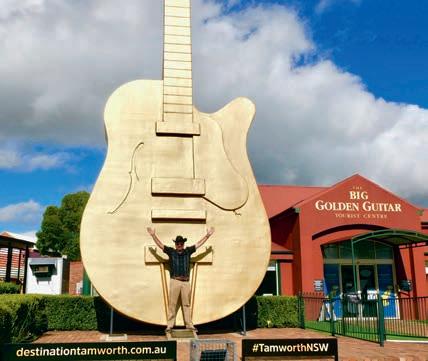

The Golden Guitar towering over McDonald’s reminds everyone that Tamworth eventually found fame through country music, sure, but electricity came first
Music Hall of Fame and encounter Smoky Dawson’s mechanical armchair –a device that ejects pensioners with the efficiency of a surly bouncer.
The wax museum features country music legends preserved in synthetic immortality. Here we enjoy the guessing game of identification, while marvelling at how many people achieved fame by singing about trucks, heartbreak, and dogs.
Taking wonder for granted Evening walks down Peel Street reveal Tamworth’s nightly transformation
as streetlamps flicker to reliable life. Modern families pass beneath this illumination while managing the complex logistics of dinner plans, homework negotiations, and screen time enforcement.
Nobody pauses to consider the miracle overhead. But that’s precisely the point. Those steam–driven dynamos succeeded so completely that their wonder became invisible. The greatest triumph isn’t that they amazed people in 1888 – it’s that they work so seamlessly we’ve forgotten amazement is required.
Elizabeth Piper’s golden key unlocked more than Tamworth’s streets; it opened a future where artificial light became as fundamental as breathing. Today’s families inherit that legacy every time they flip a switch, though they’re usually too busy arguing about whose turn it is to take out the bins to notice.
Tamworth calls itself the Country Music Capital, but it will always be Australia’s original City of Lights. The difference is that now, thankfully, we can take the miracle for granted while planning what to watch on Netflix.
FAMILY PLANNING GUIDE
1. CH BOUTIQUE HOTEL
Central location, connecting rooms available
Breakfast special: $20 (easily shared)
Ground floor rooms for accessibility
Secure underground parking (unique to the hotel)
2. POWERSTATION MUSEUM
Entry: $5 adult, $2 concession, free under 5
Interactive children’s area
Call ahead to confirm opening
Allow 1–2 hours for families
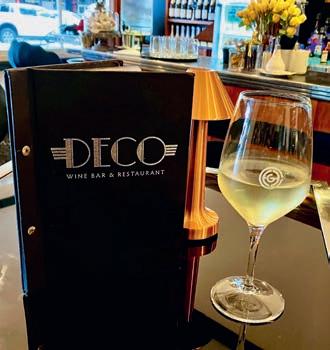
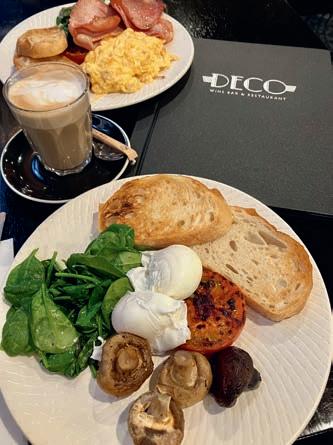
3. TRECC AND COUNTRY MUSIC SITES
6km from city centre
Free parking
Wax museum and Hall of Fame
Allow half a day
4. ESSENTIAL WEBSITES
Tamworth Powerstation Museum: tamworthpowerstationmuseum.com.au/
CH Boutique Hotel: chboutiquehotel.com.au/
TRECC: tcmf.com.au/
Big Golden Guitar: visitnsw.com/destinations/countrynsw/tamworth-area/tamworth/attractions/the-biggolden-guitar
Slim and Joy – Peel Street
Golden Guitar
Free wine with no turndown service
Deco breakfast
Navigating party food with kids: supportive boundaries and food freedom
BY ALYSSA SAID, REDWOOD WELLBEING
As the warmer months roll in, so too does the season of backyard birthdays, school celebrations, and weekend get–togethers. It’s a joyful time for kids – full of cake, balloons, laughter, and yes… a whole lot of party food.
For many parents, party food can bring up a mix of emotions. You want your child to have fun and enjoy themselves, but you also care deeply about their health, their nutrition, and helping them learn how to make balanced choices. The good news? It is possible to support them in navigating party food without turning it into a power struggle, and without creating guilt, restriction, or preoccupation around food.
By setting thoughtful boundaries and creating opportunities for independence, we can help our kids build trust in themselves, which supports a long–term healthy relationship with food. Here’s how you can approach party food before, during, and after the party with intention and care.
BEFORE THE PARTY: SETTING THE FOUNDATION
One of the most supportive things you can do before the party even starts is to ensure your child is well–nourished. Offering a nutrient–dense, balanced meal (with protein, healthy fats, and slow–releasing carbs) before they head out means they won’t arrive overly hungry and dive headfirst into the lolly bowl.
It’s also helpful to keep party food in perspective. Try not to overly hype up the treats or talk about them as “naughty” or “bad.” When we put foods on a pedestal or demonise them, we can inadvertently create more fixation and excitement, which makes it harder
for kids to eat those foods in a calm, regulated way. Instead, treat party food as a normal part of life – something fun and tasty, but not something to fear or idolise.
AT THE PARTY: BOUNDARIES THAT BUILD TRUST
Once you’re at the party, this is a golden opportunity to put into practice the balance of supportive boundaries and food autonomy.
Here are a few practical strategies:
Set structure without controlling You might say, “Let’s choose some things to put on your plate and then go sit together to eat.” This helps avoid constant grazing and gives a clear rhythm to eating.
Avoid hovering or micromanaging
If you’re constantly watching or commenting on their choices (“That’s too many chips” or “Are you sure you want another cupcake?”), it can feel like distrust. Kids who feel distrusted may struggle to build self–trust and intuitive eating skills.
Use natural boundaries
For example: “Let’s just take one serve of lollies so there’s enough for everyone,” or “How about we take a break from food and go play, and you can check in with your tummy after that?”
Support variety and exposure
Encourage your child to include a mix of foods on their plate, even things they’re unsure about. You might say, “Let’s include one of these too? You don’t have to eat it, but having it on your plate will help you get a bit more familiar with it.”
The key is to be the calm, confident guide – offering structure where needed, but allowing your child space to explore and learn. Even if they overdo it a little, it’s all part of the
learning process.
AFTER THE PARTY: THE POWER OF CONSISTENCY AND CALM
Once the party’s over, many parents feel the urge to “reset” – often by cutting out sweets at home for a while or making comments like “No more sugar this week after that party!” While well–intentioned, this can accidentally create a scarcity mindset, where your child feels they have to eat as much as they can at parties because treats aren’t available at home.
Instead, stay consistent. Continue offering balanced meals and snacks at home, and if sweet foods are part of your usual routine, keep them in the mix. This teaches kids that sweet foods aren’t something to binge on when given the chance. When it comes to party bags, a few supportive boundaries can go a long way:
“You can choose one thing from your party bag each day after lunch.”
“You’re in charge of what you eat from your party bag, but we’ll enjoy it alongside meals or snacks – not on an empty tummy.”
“It’s your party bag to enjoy – no need to rush through it all at once.”
These kinds of boundaries teach pacing, body listening, and trust. And if your child isn’t super hungry after the party, it’s okay to offer a smaller, lighter dinner – something nutritious but gentle. Let them check in with their hunger cues without pressure.
Navigating party food doesn’t have to be a minefield. Your role isn’t to control every bite, but to guide with compassion, trust, and a long–term view. And remember, one party (or even five!) won’t define your child’s eating habits. What matters most is the bigger picture of the food environment you’re creating every day.
Alyssa is a mother of two, a high school PDHPE teacher, and founder of Redwood Wellbeing as a certified food relationship and body image counsellor. Alyssa coaches women with poor body image and disordered eating patterns and equips parents to support their child’s body confidence and balanced approaches to eating.


